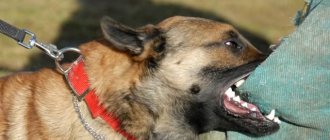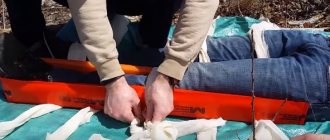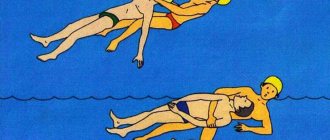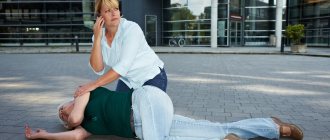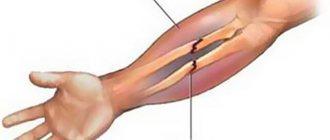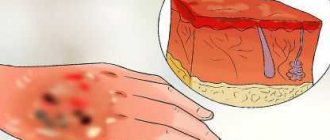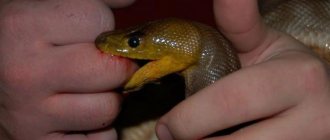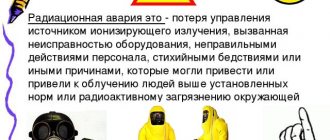Danger from a hornet sting. Why is the attack of these insects dangerous? Differences from bees and wasps. What needs to be done to prevent dangerous complications. First aid. Traditional medicine and specialized drugs. What methods are used in the fight against hornets?
Many of us are afraid of hornets and consider them very dangerous insects, which is absolutely correct. The fact is that, unlike bees, which can sting only once, these insects can inflict numerous bites, which pose a danger not only to a person’s well-being, but also to life.
There are known cases when an attack by these dangerous insects resulted in death. Therefore, a person should know what to do if a hornet bite occurs, and what first aid actions need to be taken.
Description of the hornet
This insect can be compared to a wasp, only the hornet is much larger. The length of its body is about 2.5 cm, the uterus is even larger, its body reaches 3.5 cm in length. More often they are found outside the city, in the wild, in summer cottages, gardens. They can build a nest in absolutely any place, on a tree, under the roof of a house. But the nests are located in protected places from weather conditions.
In addition to the fairly large size, the distinctive characteristics are the color. The wasp's chest is black, while the hornet's is brown with a red tint. It also differs in the shape of its head; on the back it is much wider than on the front. You can see how they look in photos and pictures.
Regarding the attack, it is worth noting the pain. Wasp and bee stings are not as painful as hornets, this is due to the toxins that are released during the attack. The human body tolerates poisons quite difficult.
The venom contains histamine, which causes allergic reactions. A single bite will not be fatal, but multiple bites can. Often only females attack people because they have a sting, but it is almost impossible to distinguish a male from a female.
The giant hornet lives in Southeast Asia, and a single bite from this dangerous insect can lead to serious consequences.
Who are hornets
Hornets belong to the hymenoptera predatory insects of the aspen family, which they also resemble in their appearance. Their size and the consequences of the bite depend on the variety: the European species is up to 30 mm in length, but the Asian giants can reach 55 mm. It is the latter that pose the greatest threat to human health and life, because they carry a very strong toxic poison in their sting.
Hornets are also tireless builders, constructing cocoon-like nests from pieces of bark, which can be hung in the forest on trees, in hollows, or near human habitation: in the attic, in a barn, etc. In such houses, the female lays eggs, and all working individuals are engaged in obtaining food and feeding their insatiable and fast-growing offspring.
What is the characteristic of a bite?
First of all, it must be said that the hornet never attacks a person first, without reason. In other words, you can calmly be near him and not be afraid of an attack, if you do not provoke him or make sudden and frightening movements.
Rest assured that he will not hesitate to attack when there is a threat to his offspring or himself. Do not try to touch its nest, and also do not wave your arms if hornets are nearby.
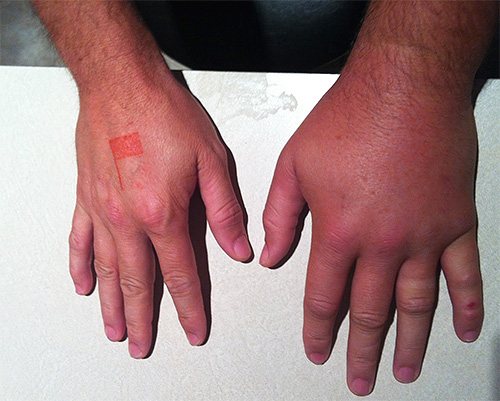
During an attack, a person experiences the following symptoms:
- The affected area of skin swells.
- The reaction in the affected area spreads over a large area.
- The wound into which the sting penetrated is very painful.
- Heart rate increases.
- There are surges in blood pressure.
In cases where a person is prone to allergic reactions, the following symptoms may occur:
- Nausea appears and vomiting is possible.
- Feet and hands become cold.
- Partial or complete loss of consciousness.
- Blue discoloration may occur in the neck area, ears, face and eyelids.
- Swelling of soft tissues.
- Attacks of suffocation.
- Red spots appear on the skin, and the skin peels off.

Each body is individual and reacts to venom differently, but some people need special help during an attack, especially in cases where there is an allergic reaction or the bites are not isolated. In such situations, complications are possible in the form of swelling of the larynx, breathing problems, and in severe cases, death is possible.
Preventing hornet bites
To protect yourself from attacks by poisonous insects, just follow the recommendations:
- When choosing a place for a picnic, first inspect the green spaces to identify insect nests.
- Avoid sudden movements when noticing stinging insects.
- If you find a nest, do not try to knock it down with a stick or destroy it.
- Do not knock on a tree or roof if you find a nest there.
- Stay away from that nest location.
- When going out of town, do not wear perfumes with floral or fruity scents.
Home attack help
Often, when a hornet attack occurs, like other stinging insects, a person begins to panic, which leads to complications. Therefore, you need to know what needs to be done and not make mistakes so as not to cause even more harm. It is also necessary to know how the allergic reaction manifests itself in the victim in order to provide the necessary first aid.
So, you need to act as follows:
- If a person is prone to allergic reactions, he should have antihistamines with him, which must be taken in the event of an attack.
- Also, allergy sufferers must have medical documents that provide information regarding the nature of the allergy, how it manifests itself, and what medications should be taken.
- When there are no relevant documents and the victim cannot provide the necessary information, you need to contact relatives or friends who can tell you about this condition.
To avoid serious consequences, you must do the following:
- The victim must be taken away from the place where the attack took place.
- You need to seat the person comfortably.
- Unfasten the collar, loosen the belt so that nothing is squeezing your body.
- You should not look for a sting in the wound, since during an attack the hornet does not leave its sting.
- If the insect was killed during an attack, small fragments of the sting may remain in the wound; they must be removed. To do this, be sure to disinfect the wound and instrument. If the fragment is deep in the wound, you need to consult a doctor.
- The affected area must be treated with an antibacterial agent; you can use a solution of potassium permanganate, only a weak one.
- It is also necessary to treat the wound with an alcohol solution, it can be medical alcohol, vodka, moonshine, or even cologne.
- Afterwards, you need to apply a cold compress to remove swelling, you can use ice.
- To prevent the development of an allergic reaction, you should take an antihistamine.
- If a person has a severe allergic reaction, it is imperative to call an ambulance or take him to the hospital yourself.
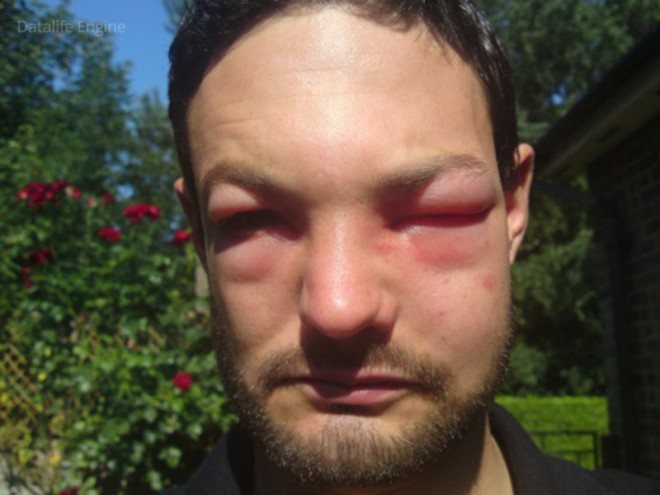
How to properly treat the affected area:
- All movements should be light, without pressure.
- Disinfectants are applied with very gentle movements.
- You should not try to squeeze the poison out of the wound, since it is no longer there.
- Before treating a wound, you should wash your hands with soap to avoid infection.
What not to do:
- Do not rub, press or massage the affected area.
- Warm up and make warm compresses.
- Cauterize the wound.
- Treat with brilliant green and iodine.
First aid
What to do if bitten by a hornet? It all depends on where and under what circumstances it happened. It is important to protect people from mass attacks. The biological instincts of insects are aimed at survival, which means protection from external invasions. If there is a nest within 2–3 m, you must immediately leave the danger area. When indoors, you should close the windows and make sure there are no insects.
If a hornet bite occurs, the algorithm for providing first aid at home should be as follows:
- examine the wound;
- if a sting remains, for example, after hitting an insect, then carefully remove it;
- do not try to squeeze out the poison;
- suck out the contents of the wound as quickly as possible;
- treat the bite site with an alcohol wipe or liquid;
- to relieve pain and swelling, apply “cold”;
- if there are indications, then take an antiallergic drug, for example, Suprastin or Tavegil.
When treating a hornet sting at home, it is important to continue to monitor the condition of the victim. If alarming symptoms appear, you should consult a doctor.
What to do if a hornet bites a child? The algorithm of actions for providing first aid is the same as for adults. Then you need to calm the baby down, distract him from the unpleasant incident and seek the advice of a medical specialist. Incorrect assessment of symptoms, potential complications, and self-medication can significantly worsen the child’s condition.
First aid for a wasp, hornet or bee sting
Help with traditional medicine
Very often, people resort to traditional medicine recipes and not only for hornet bites. Some believe that such remedies are safer, because in this case natural products are used, and some turn to them for the reason that they do not have the necessary medicine at hand.
Regardless of the reason for which you choose traditional medicine, in this situation it is really effective and can be beneficial, especially if the attack occurred in natural conditions and the choice is small.
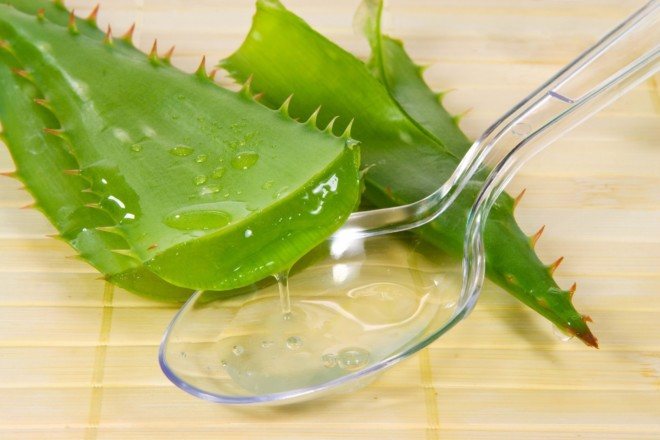
In order to relieve swelling and redness, you can use the following plants:
- Aloe, both the juice of the plant and its pulp will be useful.
- Plantain leaves and juice, which we all know about from a very early age.
- Chopped parsley.
How to properly process and provide assistance
- The affected area is washed with clean water.
- Next, you need to rinse the plant that will be used.
- Afterwards, you can apply plantain juice or a leaf, aloe pulp or leaf, parsley pulp to the wound.
- A bandage or piece of clean cloth is placed on top.
- After 20 minutes, the compress needs to be changed, new plant pulps or the plant itself must be applied. It is necessary to change several compresses.

No matter what traditional methods are used, you need to drink an allergy medicine, they do not cure this condition. Very often, on a trip to nature, we forget to take the necessary medications with us, so in most cases we will not find the necessary pill.
The victim should be taken to the hospital or an ambulance should be called. If the pill was found and the victim drank it, you need to monitor his health condition, and if it worsens, go to the hospital.
Medicines for allergic reactions
There are people whose bodies are very difficult to tolerate stings of hornets and other species, exhibiting allergic reactions. If they are prone to allergic reactions, people are aware of the danger and often always have the necessary medications with them. Medicines are very important in natural conditions, when there are no medical facilities nearby. In this situation, every minute is precious, because the poison is much concentrated and more dangerous than bees and wasps.
Doctors recommend having antihistamines in your first aid kits and not going into nature without them; they will help minimize the negative impact, preserve health, and in some cases even life. 3rd-4th generation drugs are fast-acting and do not cause drowsiness.
Antihistamines should always be in your home medicine cabinet, as they can save health, and maybe even life, in cases of stinging insect bites. The most effective are 3rd and 4th generation products. These are drugs that do not cause drowsiness and act throughout the day.
What to do after a bite
A bite on a limb is less dangerous than if the hornet bites or stings in:
- head;
- upper shoulder girdle;
- neck;
- the passage of large blood vessels located in the armpits and under the knees;
- groin;
- language.
First aid

The sting remains in the skin
Hornet sting and its consequences
Algorithm of action in case of a hornet bite:
- You should start by examining the wound. If the sting remains in the skin, it must be removed. This should be done very carefully, using tweezers if possible. You should not try to squeeze out the sting, as this may cause more venom to enter the tissue.
- It is advisable to treat the bite site with a solution of hydrogen peroxide to prevent infection from getting into the wound. The hornet is a predator; its diet may include dead insects, carrion and other organic waste.
- Cold must be applied to the affected area, which will prevent the process of absorption of the poison into the body and thereby slow down the intoxication. If you don't have ice on hand, a cold compress will do.
- It is necessary to take an antihistamine. This should be done even if there are no signs of an allergic reaction.
Important! When a person is bitten by wasps and hornets, immunity is not developed. The reaction formed after the first time tends to worsen.
The risk group consists of people whose consequences in their severity do not correspond to the size of the injury. For example, when a finger is bitten, the leg swells to the knee and above. This also includes a situation when a person’s general condition worsens, and the accompanying symptoms last for several days.
If it was noticed that the victim had a hard time surviving the consequences of the bite, this means that the next time he is attacked by an insect, his body’s reaction will be expressed more actively and allergic processes will manifest themselves much faster.
Anyone who suffers from allergies is strongly recommended to always carry with them a special anti-shock kit, which includes special syringes with adrenaline solution. If necessary, injections are administered through clothing to any part of the patient's body.
In addition, the allergist issues a special passport to his registered patients. The information contained in this document should help those around the injured person who happen to be nearby to act correctly.
Attention! If your health quickly deteriorates after a bite, you should not delay contacting medical institutions where shock therapy will be provided. Sometimes the reaction can be very fast and strong. In such a situation, there is a risk of anaphylactic shock, which in turn can result in death.
How to treat bites
If the body has recovered from the bite within 3-5 hours, then most likely the person does not require medical assistance. In this case, you can smear the wound with gels and ointments sold in pharmacies without a prescription. Such drugs perfectly relieve itching from the affected area of the skin. Antihistamines are also available without a prescription. They not only eliminate the desire to scratch the wound, but also help reduce swelling.
Treatment should be prescribed by a healthcare professional if the area of redness exceeds 10 cm in size and fever, headache and nausea continue over the next few days.
No one is immune from insect bites. But following simple rules of conduct in a critical situation will help you avoid wasting precious minutes needed for rescue and avoiding tragic consequences.
Article Rating
The best remedies for allergic reactions
The market offers a huge range of different antihistamines, the most popular and effective include:
- Suprastinex.
- Fexofenadine.
- Cetrin.
- Claritin.
- Erius.
It is also worth purchasing an effective remedy for treating the affected areas, these include:
- Fenistil-gel.
- Balm “Rescuer”.
- Fluorocort.
- Psilo-balm.
Sorbents are very important during an attack, as they reduce the concentration of poison in the body. The most popular drugs that have this effect include:
- Polysorb.
- Enterosgel.
- Smecta.
- Activated carbon.
- White coal.
Consequences of a bite
It is impossible to say exactly what result to expect from an attack by this insect; each organism is individual and reacts to poison differently.
In addition, the body’s reaction depends on a number of factors, including:
- Predisposition to allergic reactions.
- Age of the victim.
- State of health, presence of chronic diseases.
- Physical state.
- The number of bites, the more there are, the more dangerous the consequences.
The body's reaction to the first bite is unpredictable. They are most dangerous for children and the elderly. It is also worth saying that the situation is more dangerous if he bites not on the finger, but on the face, eyes and neck.
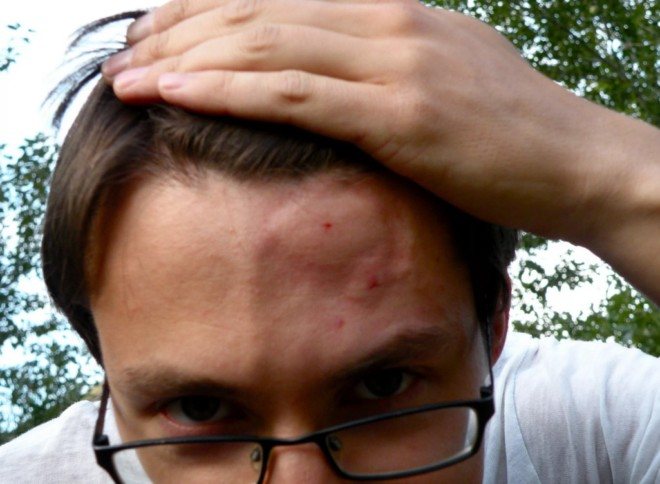
Also, a person’s condition depends on the level of intoxication; the higher it is, the more complicated the situation. To reduce intoxication as much as possible, you cannot do without specialized medications.
With severe intoxication, the following symptoms are observed:
- Headache.
- Reduced blood pressure.
- Nausea, vomiting.
- Cardiopalmus.
- Severe weakness.
- Possible loss of consciousness.
- Hallucinations.
- Increased body temperature.
- Swelling of the affected area and skin approx.
- Fever, chills.
- Shortness of breath.
- Heavy sweating.
- Convulsions are possible.
Any of the above symptoms is a reason to consult an allergist. It is imperative to monitor the condition of the victim; situations where there is confusion and difficulty breathing are especially dangerous; in this case, be sure to call an ambulance.
It is imperative to provide first aid before the arrival of doctors; delay is unacceptable; if Quincke's edema appears, death is possible.
Why is a hornet sting dangerous for humans?
For a healthy person not predisposed to allergies, the maximum danger is posed by more than 20 bites at a time. Almost 96% of victims experience negative reactions from the body. For the remaining 4%, the hornet bite passes without consequences.
At risk:
- allergy sufferers who may develop severe allergic reactions leading to swelling of the larynx and death. However, such complications arise only when the victim does not receive qualified first aid;
- persons subjected to repeated insect attacks - the consequences will be more severe than the first time;
- a strong negative reaction is observed if the victim is a child with an unformed immune system;
- if the hornet stings the head, neck or the area where large vessels and arteries pass.
Consequences of a hornet sting
The body's reaction depends on the age and physical fitness of the victim, the presence of chronic pathologies, his predisposition to allergies and the number of bites.
If special first aid measures have not been taken, the danger lies in the development of the following consequences:
- infection and suppuration of the bite site;
- multiple hemorrhages, which is especially likely with multiple bites;
- local tissue necrosis;
- renal failure;
- heart failure;
- in case of individual intolerance to poison - anaphylactic shock;
- death.
How to get rid of these dangerous insects
It’s worth saying right away that they are of great benefit and are absolutely harmless if you don’t touch them first. If possible, you need to resort to harmless methods to prevent an attack and save the life of the insect.
You can use smells that repel them, for example, mint, wormwood, geranium, basil; they also do not tolerate the essential oils contained in hot peppers; they do not like soap solutions, as well as smoke.

A common situation is when they fly into an apartment. You need to understand that they, just like you, are not at all happy about the meeting, and they want to return to the conditions of nature as quickly as possible, so they rush around the room in search of a way out.
There is no need to run after them with a vacuum cleaner, cans and other fishing devices, as it is likely that he will defend himself and you will be bitten. The most correct decision in this situation is to open the window wider and give him the opportunity to find a way out on his own.
There are also specialized means that are used against these insects, these include traps, smoke bombs, insecticides, and repellers.
Among the most popular are:
- Acoustic and ultrasonic repellers. EcoSniper LS-989, Sititek Flash, Grad ultra 3D, Weitech WK-0180;
- Traps. Swissinno Wasp Trap, Argus Garden.
- Smoke bombs. Quiet evening, City, Mukhoyar, FAS.
- Insecticidal lamps. Mo-El, Well, Hilton.
- Insecticides. Delta-Zone, Get, Medilis-Super, Mosquitall.
It is worth saying that in most cases it is enough to notice traditional methods for these insects to leave the area. For example, plant plants with a strong bright aroma in the garden plot, mint, lemon balm, wormwood, hot red pepper, by the way, these plants will be useful to housewives.
If it is too late to plant, and insects are settling in, you can spread dry herbs on the site; they also have a smell that will make them leave.
Difference between bee, wasp, bumblebee, hornet
Typically, people perceive these insects as those that can inflict painful bites and are not very knowledgeable about the species. But in order to be able to take the correct steps to provide first aid, it will not be superfluous to understand who committed the attack.
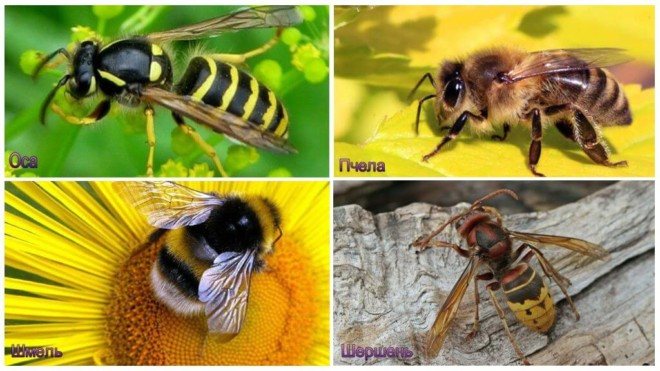
In the table you can see the main distinctive characteristics.
| Wasp | Bee | Bumblebee | Hornet | |
| Size | 2,0-3,5 | 2,1-3,9 | 1,3-2,8 | Up to 5.5 |
| The structure of the sting | smooth | has jagged edges | smooth | smooth |
Also, some people confuse them with the drone, gadfly and scolius.
Let's look at their differences:
- Gadfly. They are smaller in size, but the main distinguishing characteristic is their color. They have a gray-black body color. The gadfly belongs to synanthropic flies. They prefer animals and very rarely attack people. There is one species that lives in Central America - the human skin gadfly, so it gives preference to people.
- Scolia. In fact, they can be distinguished very easily. The body of Scolia is black, on which there are 2 yellow spots, there is also a difference in size, the size of males is 4.5 cm, and females are 3 cm.
- Drone. These individuals are male bees. They have a fairly small body size of 1.5-1.8 cm, the color is not so bright and they do not have a sting.
Description and sockets
Hymenoptera or folded-winged wasps, they are large in size and significantly larger than ordinary wasps. Some sources refer to them as "social" wasps. Minimum size from 18 mm. At the same time, 25 mm individuals are also found. Women's reaches 30-35 mm.
It has a large head and horns branching in different directions from it. The color is combined, showing black and yellow-orange colors. Brownish chest with a reddish-orange tint.
The nest is paper type, large in size, usually horizontal. The grayish-brownish tint of the nest reflects the material used for construction: rotten twigs and similar little things. The size can have up to 10 tiers, occupying up to 40 cm of space in length and 60-70 in height. They live in swarms.
Note! For nesting, they choose secluded places that are little exposed to bad weather, protected from wind and other conditions.
They are suitable for places located:
- under the arches of houses;
- on trees and bushes;
- under the roofs of buildings;
- in pipes;
- in attics and other safe places.
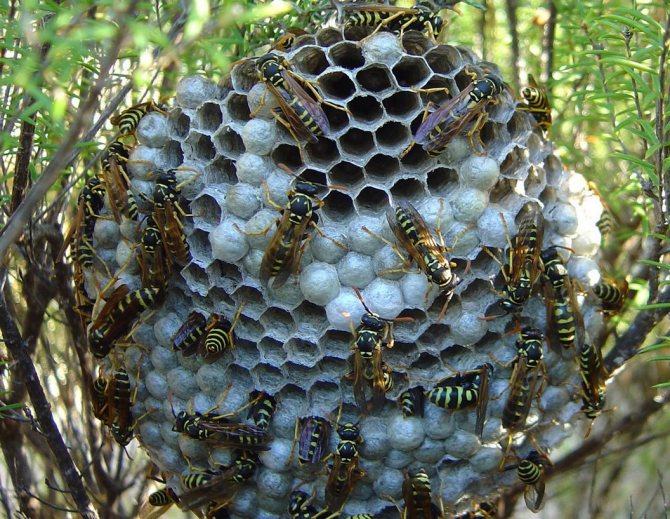
Its habitat is predominantly in the Northern Hemisphere of the planet, but it can be found almost everywhere. It can live in:
- Europe;
- Asia;
- Ural;
- China;
- Korea;
- Japan;
- India.
The habitat depends on the type of hornet. Species may vary from country to country. They prefer warm climate zones, but are quite common in the Russian Federation, right up to Sakhalin. The insect lives in a number of CIS countries.
